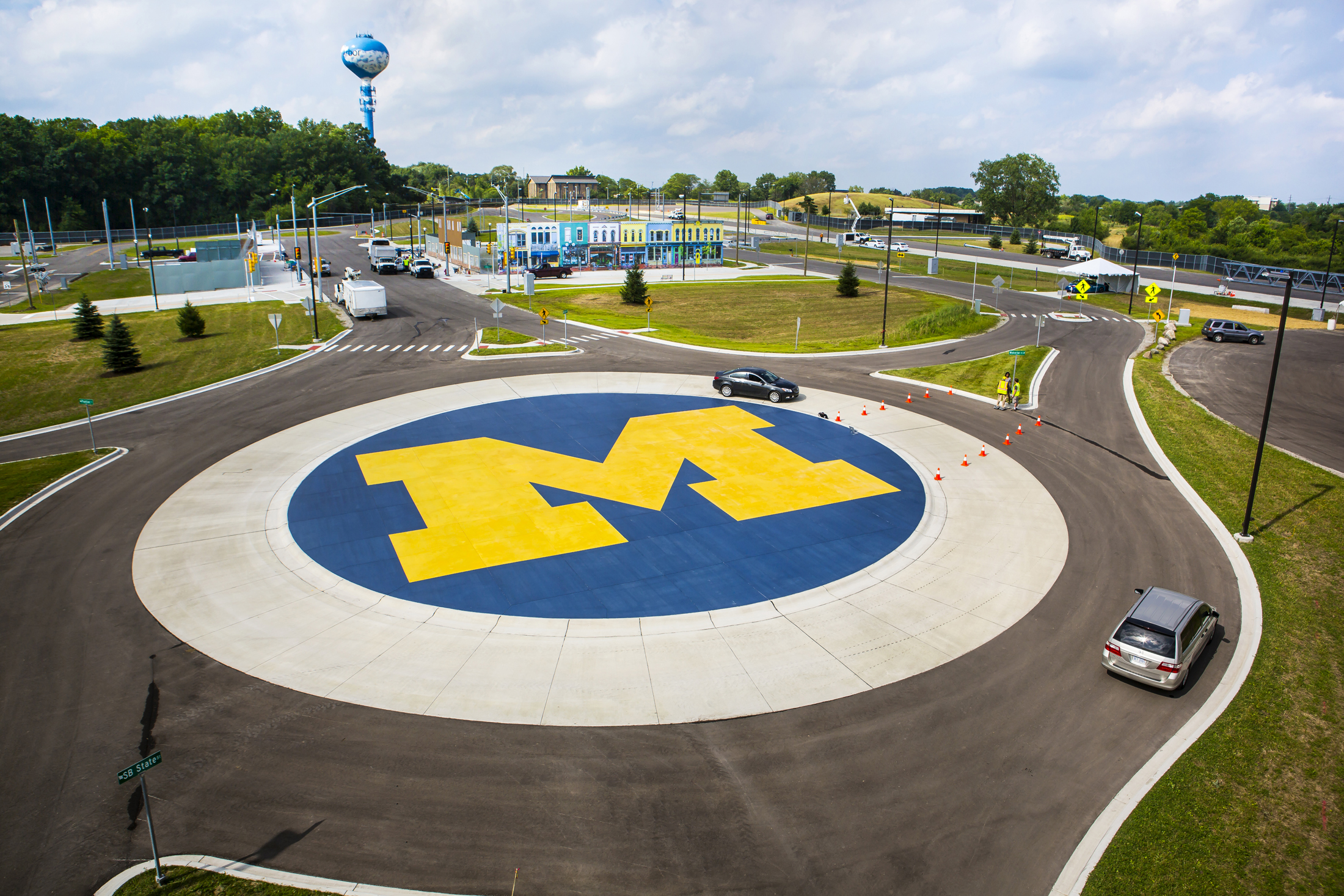
How we roll – Is America ready for a driverless future?
U-M researchers are working to roll out a connected vehicle infrastructure on the ground as driverless cars are becoming one of the most talked about topics.

U-M researchers are working to roll out a connected vehicle infrastructure on the ground as driverless cars are becoming one of the most talked about topics.
Even if you haven’t seen a driverless car on the road, you’ve seen plenty of them in the headlines. Flocks of them are predicted to swarm the streets, ready to roll up at the tap of a smart phone. They’re predicted to be clean, safe, convenient, and if the Google car is any indication, adorable. And they’re predicted to be ready for American streets before you can say, “Fully autonomous self-driving vehicle.”

But a prediction won’t schlep your kid to soccer practice. And getting our streets (and our heads) ready for driverless transportation is going to take a lot more than a cute new car and a can-do attitude. When the cars themselves are ready for prime time, we’ll need to make sure the country that invented car culture is really ready to hand over the steering wheel. We’ll need to make changes to our roads and infrastructure, too, since driverless vehicles will almost certainly require a real-time data connection to get from A to B. In fact, going driverless could be the biggest reboot of the American transportation system since the horse and buggy went the way of, well, the horse and buggy. Are we ready to make it happen?
U-M researchers are working to roll out a connected vehicle infrastructure on the ground. One of them is CEE Professor Henry Liu, who is testing a network of sensors and radio transmitters at UMTRI.
“Right now, we’re working on two things: How can we use connected infrastructure and vehicles to manage traffic better and how can we use information to shorten the development time for driverless cars,” he said.
In the system that’s currently being tested, cars equipped with specialized transmitters send their location, speed and direction of travel 10 times per second to receivers mounted on traffic signals. In return, the traffic signals broadcast their status back to the cars, where it’s displayed to drivers either on a built-in dashboard display or on a standalone device like an iPad. Drivers can use the information to moderate their speed and avoid red lights, and the system can also turn a red light green when a connected vehicle rolls up to an empty intersection.
For now, the on-the-ground applications of the current system are modest, but Liu says it’s generating valuable data that he and other researchers are using to test the components of the system itself and gain insight about how best to roll it out on a large scale.
One key test bed for the technology is Mcity, a 32-acre self-contained cityscape at U-M that’s the world’s largest dedicated testing facility for driverless cars, as well as the data and infrastructure technologies that will go with them. Officially opened in July of this year, Mcity is a public-private partnership that boasts nearly five lane-miles of roads, reconfigurable building facades, traffic signals, roundabouts, fire hydrants, even artificial pedestrians to dart out in front of driverless vehicles. The facility is a major testing site for other technologies as well, including the autonomous car navigation algorithms that Ford Motor Company is developing as part of a multi-million dollar agreement with U-M.